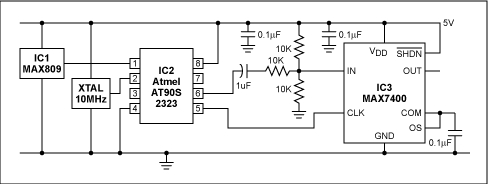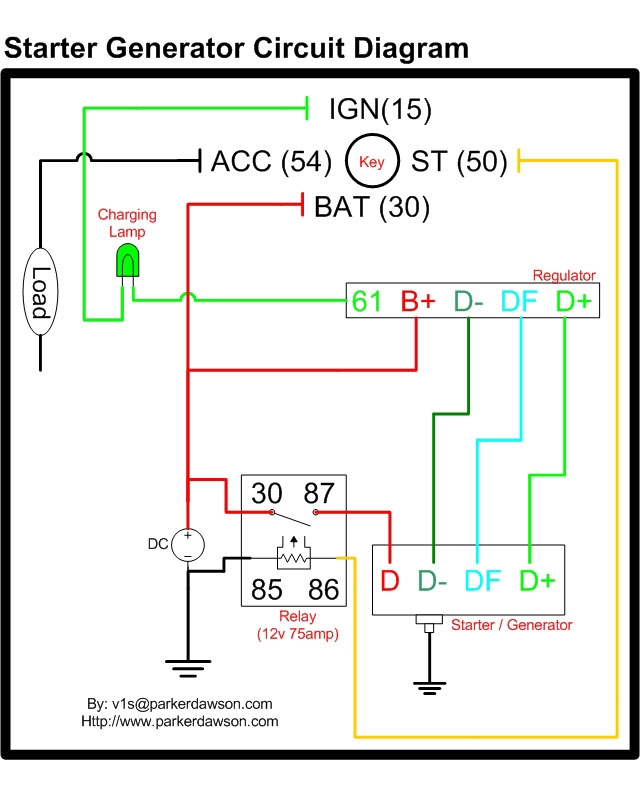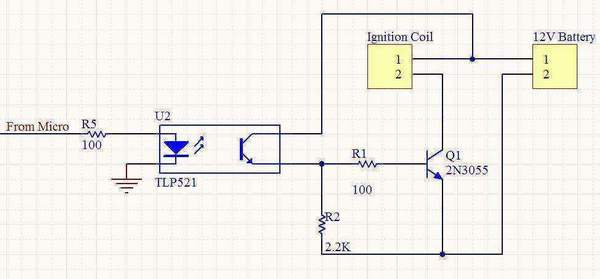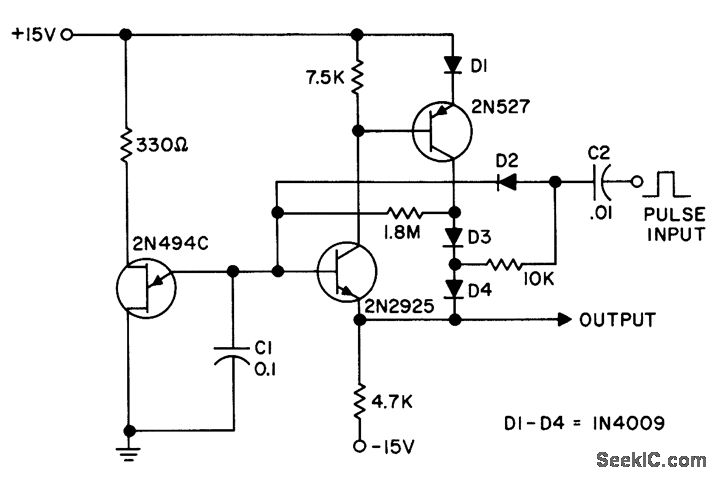
Variable Duty-Cycle Square-Wave Generator
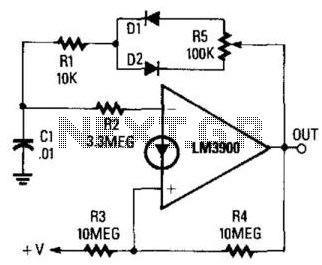
The circuit integrates a charging mechanism through Rl/Dl and the upper half of R5, while discharging occurs via R1/D2 and the lower half of R5. The duty cycle is adjustable within a range of 1:10 to 10:1 through the use of R5.
The circuit described involves a charge-discharge cycle managed by a combination of resistors and diodes. The charging phase occurs through the resistor-inductor combination (Rl/Dl) and the upper portion of resistor R5. During this phase, current flows into the capacitor, allowing it to accumulate energy. The discharge phase is facilitated by the resistor-capacitor combination (R1/D2) and the lower half of R5, where the stored energy in the capacitor is released back into the circuit.
The duty cycle, which defines the ratio of the charging time to the total cycle time, can be modified by adjusting R5. This resistor acts as a variable element that influences the time constants associated with both charging and discharging phases. By varying R5, the duty cycle can be set anywhere from 1:10, indicating a longer discharge period compared to the charge period, to 10:1, where the charge period is significantly longer than the discharge period.
This flexibility in the duty cycle allows for tailored applications in timing circuits, pulse width modulation, or other electronic applications where precise control of energy transfer is required. The use of diodes (D1/D2) ensures that current flows in the intended direction during both charging and discharging, preventing backflow and enhancing circuit reliability. The overall design emphasizes efficiency and versatility in managing electrical energy within the specified operational parameters. CI alternately charges via Rl/Dl and the upper half of R5, and discharges via R1/D2 and the lower half of R5. The duty cycle can be varied over the range from 1:10 to 10:1 via R5.
The circuit described involves a charge-discharge cycle managed by a combination of resistors and diodes. The charging phase occurs through the resistor-inductor combination (Rl/Dl) and the upper portion of resistor R5. During this phase, current flows into the capacitor, allowing it to accumulate energy. The discharge phase is facilitated by the resistor-capacitor combination (R1/D2) and the lower half of R5, where the stored energy in the capacitor is released back into the circuit.
The duty cycle, which defines the ratio of the charging time to the total cycle time, can be modified by adjusting R5. This resistor acts as a variable element that influences the time constants associated with both charging and discharging phases. By varying R5, the duty cycle can be set anywhere from 1:10, indicating a longer discharge period compared to the charge period, to 10:1, where the charge period is significantly longer than the discharge period.
This flexibility in the duty cycle allows for tailored applications in timing circuits, pulse width modulation, or other electronic applications where precise control of energy transfer is required. The use of diodes (D1/D2) ensures that current flows in the intended direction during both charging and discharging, preventing backflow and enhancing circuit reliability. The overall design emphasizes efficiency and versatility in managing electrical energy within the specified operational parameters. CI alternately charges via Rl/Dl and the upper half of R5, and discharges via R1/D2 and the lower half of R5. The duty cycle can be varied over the range from 1:10 to 10:1 via R5.
